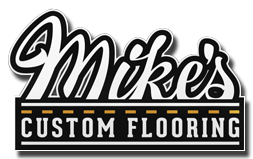Hardwood floors are known for their durability, elegance, and timeless charm but even the best wood flooring can suffer damage under the wrong conditions. One of the most serious issues you might face is buckling, where the floorboards lift, warp, or separate from the subfloor. Not only is it unsightly, but if left untreated, it can lead to long-term structural problems. Mike’s Custom Flooring would like to explore why hardwood floors buckle, how to identify the signs early, and most importantly how to fix and prevent it.
What is Buckling?
Buckling occurs when hardwood planks lift or detach from the subfloor, usually forming ridges or hills in the flooring. Unlike minor issues like cupping or crowning, buckling is a severe reaction to excess moisture or improper installation, often requiring professional repair.
Common Causes of Buckling Hardwood Floors
Moisture and Water Damage: The most common cause of buckling is moisture. Hardwood is a natural material that expands when exposed to water. When there’s excessive humidity, flooding, leaks, or standing water under the floor, the boards swell and push against one another eventually lifting from the subfloor.
Lack of Acclimation: Wood flooring needs to acclimate to the environment before it is installed. If planks are laid without adjusting to the room’s temperature and humidity, they may expand or contract too quickly, leading to buckling.
Improper Installation: Installation errors can also lead to buckling. These include:
• Not leaving proper expansion gaps along walls
• Inadequate adhesive or fasteners
• Installing over a moist subfloor without a moisture barrier
High Humidity and Climate Changes: In humid climates or homes without proper HVAC systems, fluctuating humidity can cause wood to expand dramatically. Without room to grow, the planks buckle.
How to Repair Buckling Hardwood Floors
Identify and Fix the Moisture Source: Before any repair can begin, you must find and eliminate the source of moisture. This might mean repairing a leak, improving drainage, using a dehumidifier, or sealing a concrete subfloor. Until the moisture problem is resolved, any repair effort will only be temporary.
Dry the Floor Thoroughly: If the buckling is caught early, drying the area completely may allow the boards to settle back into place. Use fans and dehumidifiers to reduce moisture and open windows to promote air circulation. In severe cases, hire a water restoration specialist for professional drying.
Assess the Damage: Once the floor is dry, determine how extensive the damage is, for example:
• Minor buckling might resolve on its own.
• Moderate damage may require board replacement.
• Severe damage often means removing and reinstalling sections of flooring.
Replace or Reinstall Boards: Damaged or warped boards must be removed and replaced with new matching planks. This can involve:
• Cutting out the affected boards
• Cleaning and preparing the subfloor
• Reinstalling new boards with proper spacing and fasteners
• Sanding and refinishing the area for a seamless look
This is a job best left to flooring professionals, especially if you’re working with custom stains or older flooring.
Hardwood Floor Installation, Repairs, Refinishing & More in Charles Town & Eastern Panhandle of Berkeley & Jefferson Counties in WV | Winchester & Frederick County | Round Hill & Loudoun County | Berryville & Clarke County | Herndon & Fairfax County VA
Buckling is one of the most serious issues your hardwood floors can face, but it is not unfixable. By identifying the signs early and addressing the root cause, usually moisture, you can often restore your floors to their original beauty. For help repairing your hardwood floors, contact Mike’s Custom flooring today.





